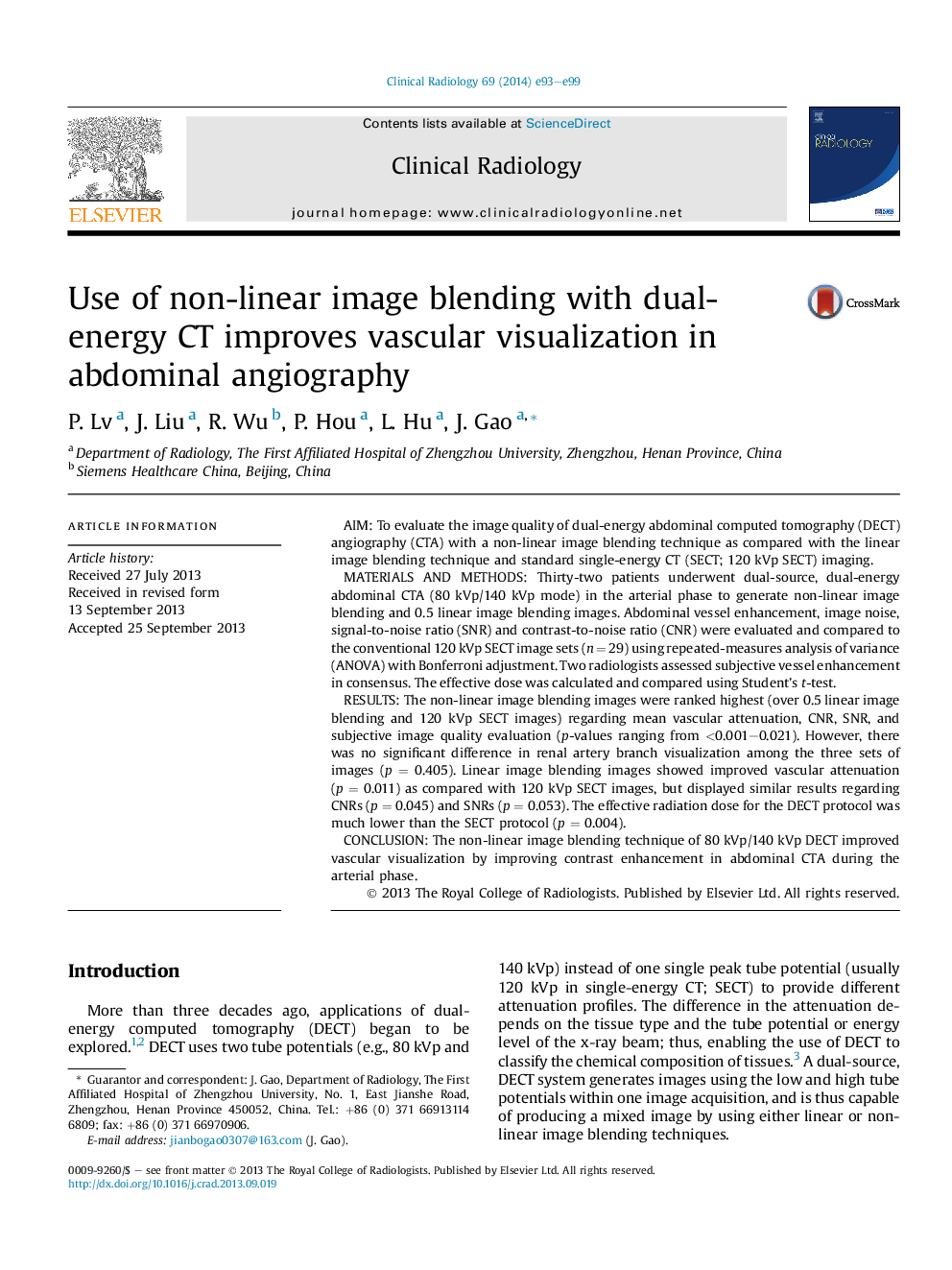| Article ID | Journal | Published Year | Pages | File Type |
|---|---|---|---|---|
| 3981487 | Clinical Radiology | 2014 | 7 Pages |
AimTo evaluate the image quality of dual-energy abdominal computed tomography (DECT) angiography (CTA) with a non-linear image blending technique as compared with the linear image blending technique and standard single-energy CT (SECT; 120 kVp SECT) imaging.Materials and methodsThirty-two patients underwent dual-source, dual-energy abdominal CTA (80 kVp/140 kVp mode) in the arterial phase to generate non-linear image blending and 0.5 linear image blending images. Abdominal vessel enhancement, image noise, signal-to-noise ratio (SNR) and contrast-to-noise ratio (CNR) were evaluated and compared to the conventional 120 kVp SECT image sets (n = 29) using repeated-measures analysis of variance (ANOVA) with Bonferroni adjustment. Two radiologists assessed subjective vessel enhancement in consensus. The effective dose was calculated and compared using Student's t-test.ResultsThe non-linear image blending images were ranked highest (over 0.5 linear image blending and 120 kVp SECT images) regarding mean vascular attenuation, CNR, SNR, and subjective image quality evaluation (p-values ranging from <0.001–0.021). However, there was no significant difference in renal artery branch visualization among the three sets of images (p = 0.405). Linear image blending images showed improved vascular attenuation (p = 0.011) as compared with 120 kVp SECT images, but displayed similar results regarding CNRs (p = 0.045) and SNRs (p = 0.053). The effective radiation dose for the DECT protocol was much lower than the SECT protocol (p = 0.004).ConclusionThe non-linear image blending technique of 80 kVp/140 kVp DECT improved vascular visualization by improving contrast enhancement in abdominal CTA during the arterial phase.
